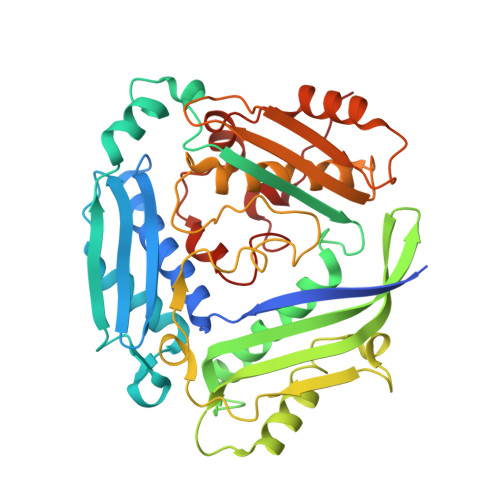Development of a Series of Pyrrolopyridone MAT2A Inhibitors.
Atkinson, S.J., Bagal, S.K., Argyrou, A., Askin, S., Cheung, T., Chiarparin, E., Coen, M., Collie, I.T., Dale, I.L., De Fusco, C., Dillman, K., Evans, L., Feron, L.J., Foster, A.J., Grondine, M., Kantae, V., Lamont, G.M., Lamont, S., Lynch, J.T., Nilsson Lill, S., Robb, G.R., Saeh, J., Schimpl, M., Scott, J.S., Smith, J., Srinivasan, B., Tentarelli, S., Vazquez-Chantada, M., Wagner, D., Walsh, J.J., Watson, D., Williamson, B.(2024) J Med Chem 67: 4541-4559
- PubMed: 38466661
- DOI: https://doi.org/10.1021/acs.jmedchem.3c01860
- Primary Citation of Related Structures:
8QDY, 8QDZ, 8QE0, 8QE1, 8QE2, 8QE3 - PubMed Abstract:
The optimization of an allosteric fragment, discovered by differential scanning fluorimetry, to an in vivo MAT2a tool inhibitor is discussed. The structure-based drug discovery approach, aided by relative binding free energy calculations, resulted in AZ'9567 ( 21 ), a potent inhibitor in vitro with excellent preclinical pharmacokinetic properties. This tool showed a selective antiproliferative effect on methylthioadenosine phosphorylase (MTAP) KO cells, both in vitro and in vivo, providing further evidence to support the utility of MAT2a inhibitors as potential anticancer therapies for MTAP-deficient tumors.
Organizational Affiliation:
Oncology R&D, AstraZeneca, The Discovery Centre, Cambridge Biomedical Campus, 1 Francis Crick Avenue, Cambridge CB2 0AA, U.K.
















